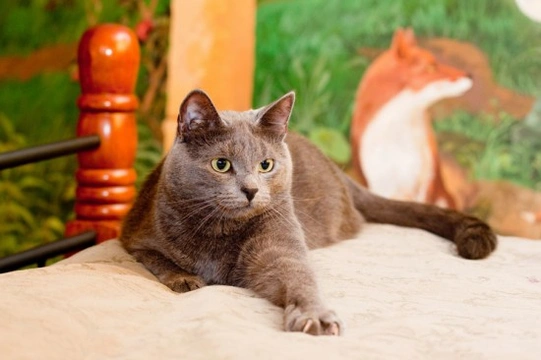
How to stop your cat from scratching indoors
Scratching the surface of objects is a normal feline behaviour but it can cause a lot of very expensive damage if done indoors. But apart from being an expensive nuisance to owners, scratching indoors can actually indicate that the cat does not feel completely relaxed in his surroundings. In order to stop destructive scratching behaviour owners must first understand why their cat is scratching in the house.
What do cats scratch?
Cats scratch objects for two reasons: to maintain good claw and muscle condition; and to leave a message in that location. When the cat drags his claws down a surface, a smell unique to the individual cat is deposited on that surface. This scent and the visual signal of the scratch marks and discarded claw husks provide a clear message to other cats in the vicinity, as well as to the cat itself.
Why does your cat scratch in the house?
Where the cat is scratching in the house can give clues as to the reason for the cat scratching. Many cats have restricted or no access to the outdoors and therefore have to maintain good claw condition inside the house. For this function, a cat will find one or two suitable scratching sites and use only them, whether this is a bought cat scratching post or the back of the sofa. Most cats prefer scratching on tall, sturdy objects that have a vertical grain to their texture. Unfortunately, in many cases the back of the sofa meets more of these criteria than do many cat scratching posts bought from pet shops.Cats that enjoy their owners’ attention or those that are bored at home might also learn that whenever they scratch the furniture or wallpaper their owners interact with them (by talking to them, shouting at or chasing them, or distracting with a toy or food), but when they use their scratching post they are ignored. Consequently, they continue to scratch inappropriate surfaces as a way of getting attention or making something exciting happen.However, if your cat is scratching in several locations throughout your home, and in areas of potential disturbance or conflict - commonly doorways, windows and cat flaps - it is more likely that the cat is scratching for communicative reasons as a result of feeling insecure in these areas. The most common reason for this type of scratching is the presence of another cat; however, other environmental changes can also lead to this behaviour.
How can you stop your cat scratching indoors?
If your cat is scratching furniture or wallpaper to maintain its claws, cover the scratched surface with thick plastic sheeting to prevent your cat from scratching there. Then place an appropriate cat scratching post directly next to the scratched area. An ideal scratching post has a heavy base to stop it from falling over when scratched, is tall enough to allow the cat to fully stretch out while scratching, and has a vertical weave to allow the cat to drag its claws downwards without getting them caught in the material. You can encourage your cat to use this new post by placing tasty food treats on it and praising your cat whenever he uses the post. Once your cat is consistently using the new post move it gradually to a more convenient location and remove the plastic sheeting from the protected surface. Don’t move the post too far too quickly or you may find that your cat reverts back to scratching the furniture again. If your cat is scratching furniture as a marking behaviour then you must first identify what is worrying your cat in this part of his territory and deal with this. Simply preventing your cat from scratching without changing your cat’s motivation to scratch is not recommended. As this behaviour is an expression of the cat’s anxiety it is important to allow the cat the opportunity to scratch. If you do not, and simply stop the cat from scratching you may find that your cat starts to show different inappropriate behaviours, such as spraying, to express his anxiety. The location of where your cat is scratching will help you identify what is worrying him, for example if your cat is scratching internal doorways or other areas where household cats have to pass each other frequently then the ‘scratching’ cat might feel threatened by the others. However, if your cat is scratching external doorways and window frames then he is more likely to be worried by something outside, such as a neighbouring cat coming into the garden. In addition to reducing your cat’s stress, you should also encourage your cat to scratch in more appropriate areas by following the above advice; cover the scratched area with a protective material and place a more appropriate scratching surface next to it. In order for your cat to feel more relaxed in his surroundings again and to permanently stop his motivation to scratch the furniture or woodwork you must identify and deal with what is worrying him. Don’t just provide him with another scratching surface.
Should you punish your cat for scratching indoors?
Scratching is a natural behaviour that cats should be allowed to exhibit. Shouting at, or otherwise reacting to your cat when he scratches furniture may actually cause your cat to scratch more frequently as he becomes more anxious in his environment or because he learns that scratching is a successful attention seeking behaviour.
Further help
This advice will cure most cases of indoor scratching; however, in some cases the problem may be too complex for you to deal with without professional help. It may then be necessary to discuss a referral to a clinical behaviourist with your vet.



